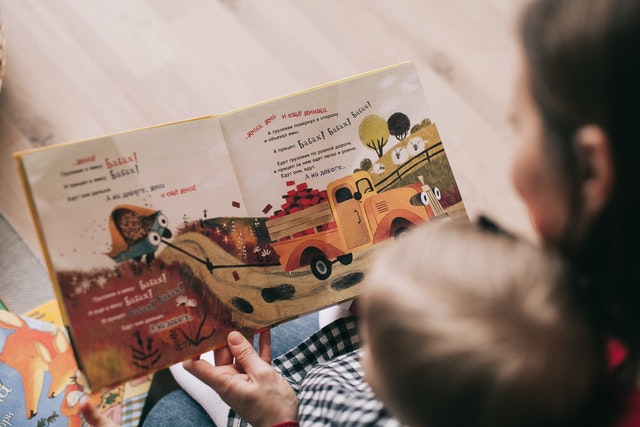
Children’s books make reading fun, but they also prepare babies to talk, boost vocabulary, increase attention span and get children ready to read on their own.
According to the National Center on Early Childhood Development, infants’ brains prepare to speak months before they say their first words. To help prepare their brains to speak, children need to hear language. Reading helps their brain connect the words to pictures of things in their world. Babies love the slow, exaggerated sing-song voice, often called “parentese,” that we naturally use with babies. Books and nursery rhymes encourage this cadence. Once children learn to talk, reading books aloud to them can help expand their vocabulary.
The American Academy of Pediatrics and HealthyChildren.org offer these tips on reading with children:
- Run your finger under the words as you read to show your child that the print carries the story.
- Use funny voices and animal noises. Do not be afraid to ham it up! This will help your child get excited about the story.
- Stop to look at the pictures; ask your child to name things she sees in the pictures. Talk about how the pictures relate to the story.
- Invite your child to join in whenever there is a repeated phrase in the text.
- Show your child how events in the book are similar to events in your child’s life.
- If your child asks a question, stop and answer it. The book may help your child express her thoughts and solve her own problems.
- Keep reading to your child even after she learns to read. A child can listen and understand more difficult stories than she can read on her own.
- Once your child begins to read, let them read out loud to build confidence. Help them with words and stop if you notice early signs of frustration. Above all, give your child lots of praise.
- Set aside time every day to read together. Bedtime stories are a great way to wind down after a busy day and get ready for sleep.
- Leave books in your child’s room for her to enjoy on her own. Make sure her room is reading-friendly with a comfortable bed or chair, bookshelf and reading lamp.
- Read books that your child enjoys. After a while, your child may learn the words to her favorite book. When this happens, let your child complete the sentences or take turns reciting the words.
If you struggle to find time to read with your child, it’s OK. Do your best. Consider asking older siblings, cousins or grandparents to read to little ones. And no need to buy new books. Borrow books from the public or school library or Little Free Libraries, those outdoor bookcases around town. Thrift stores and garage sales are loaded with books at low prices too.
The Mankato Clinic Children’s Health Center also has a Reading Nook generously stocked by The Creative Company. Youth patients may take home a book of their choice at each appointment.
Happy reading!
Up next
Self-Care is Not Selfish: Let's Recharge

